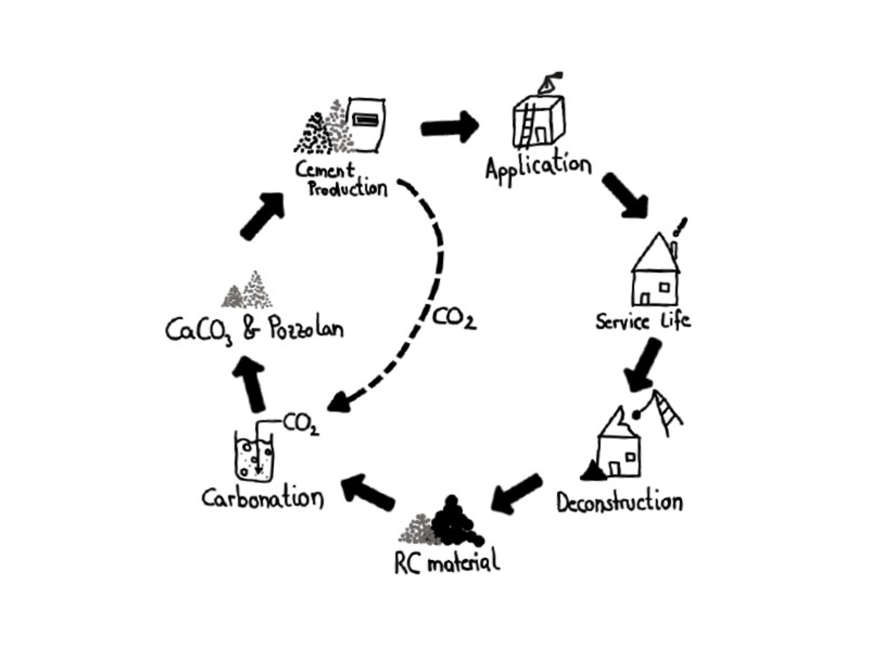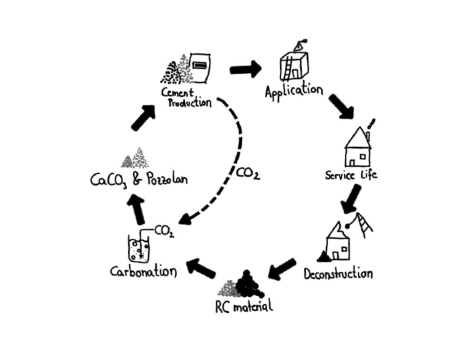Project abstract
The need of today’s society to reduce emission of greenhouse gases and resource consumption is currently prevailing in discussions and media more than ever. The construction sector is a massive contributor to global CO2 emissions, with cement production alone accounting for approximately 7-8% of total anthropogenic CO2 emissions. The integration of supplementary cementitious materials (SCMs) into cement can significantly reduce these emissions. However, conventional SCMs like fly ash and slag are becoming scarce, causing the need for the development of alternative materials. The re-CEM project addresses this critical challenge by exploring the potential of carbon capture and utilization (CCU) technologies to convert recycled concrete paste (RCP) into a viable SCM. RCP, a by-product of concrete recycling, presents a promising solution due to its high availability and potential for CO2 sequestration when subjected to wet carbonation. Despite this potential, RCP is currently underutilized, with much of it ending up in landfills. The wet carbonation of RCP can enhance its reactivity by forming a reactive Si-Al-gel, transforming it into a highly pozzolanic SCM. This project aims to clarify the complex relationships between the chemical composition, the amorphous Si-Al-gel structure formed during wet carbonation, and the pozzolanic reactivity of the resulting carbonated RCP (cRCP) for its use in cement and concrete.
Applicants: Prof. Dr. Alisa Machner, TUM
Researcher in charge: M.Sc. Fabian Niewöhner



